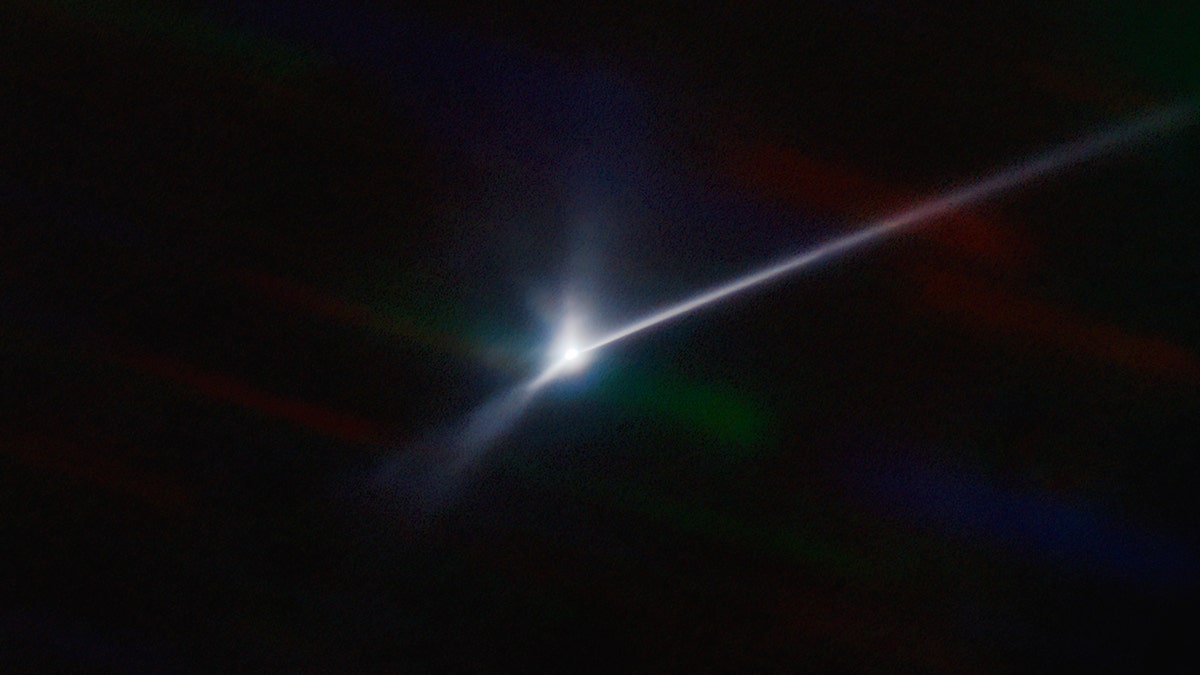Fox News Flash top headlines for October 4
Fox News Flash top headlines are here. Check out what's clicking on Foxnews.com.
The asteroid that got smacked by a NASA spacecraft is now being trailed by thousands of miles of debris from the impact.
Astronomers captured the scene millions of miles away with a telescope in Chile. Their remarkable observation two days after last month's planetary defense test was recently released a National Science Foundation lab in Arizona.

This image made available by NOIRLab shows a plume of dust and debris blasted from the surface of the asteroid Dimorphos by NASA's DART spacecraft after it impacted on Sept. 26, 2022, captured by the U.S. National Science Foundation's NOIRLab's SOAR telescope in Chile. (Teddy Kareta, Matthew Knight/NOIRLab via AP)
The image shows an expanding, comet-like tail more than 6,000 miles (10,000 kilometers) long, consisting of dust and other material spewed from the impact crater.
NASA, SPACEX TO STUDY FEASIBILITY OF BOOSTING BELEAGUERED HUBBLE SPACE TELESCOPE INTO HIGHER ORBIT
This plume is accelerating away from the harmless asteroid, in large part, because of pressure on it from solar radiation, said Matthew Knight of the U.S. Naval Research Laboratory, who made the observation along with Lowell Observatory's Teddy Kareta using the Southern Astrophysical Research Telescope.

A television at NASA's Kennedy Space Center in Cape Canaveral, Florida, captures the final images from the Double Asteroid Redirection Test (DART) just before it smashes into the asteroid Dimorphos on September 26, 2022. (Photo by JIM WATSON/AFP via Getty Images)
Scientists expect the tail to get even longer and disperse even more, becoming so tenuous at one point that it's undetectable.
NASA RELEASES DETAILED PHOTOS OF DART ASTEROID CRASH
"At that point, the material will be like any other dust floating around the solar system," Knight said in an email Tuesday.
CLICK HERE TO GET THE FOX NEWS APP
More observations are planned to determine how much and what kind of material was hurled from the 525-foot (160-meter) Dimorphos, a moonlet of a larger asteroid.
Launched nearly a year ago, NASA's Dart spacecraft was destroyed in the head-on collision. The $325 million mission to deflect an asteroid's orbit was intended as a dress rehearsal for the day a killer rock heads our way. Dimorphos and its companion rock never posed a threat to Earth and still do not, according to NASA.





















